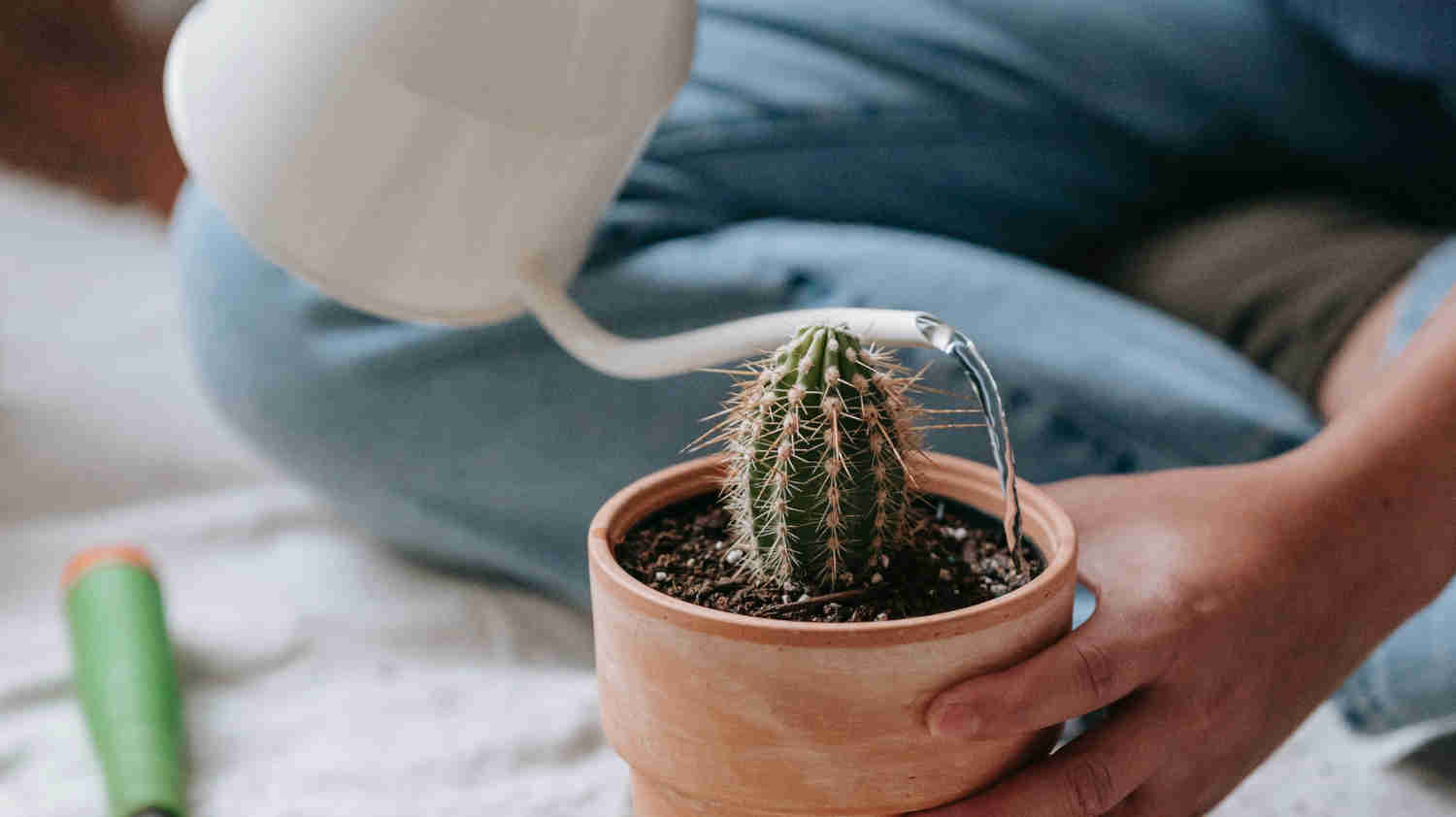Do Cactus Need Water?
Cactus plants are renowned for their survival in dry and arid environments. However, this doesn’t mean that cacti can thrive without any water at all. Understanding the watering needs of cacti is essential for their health and growth. Today, we will shed some light on the true nature of cacti and their need for water.
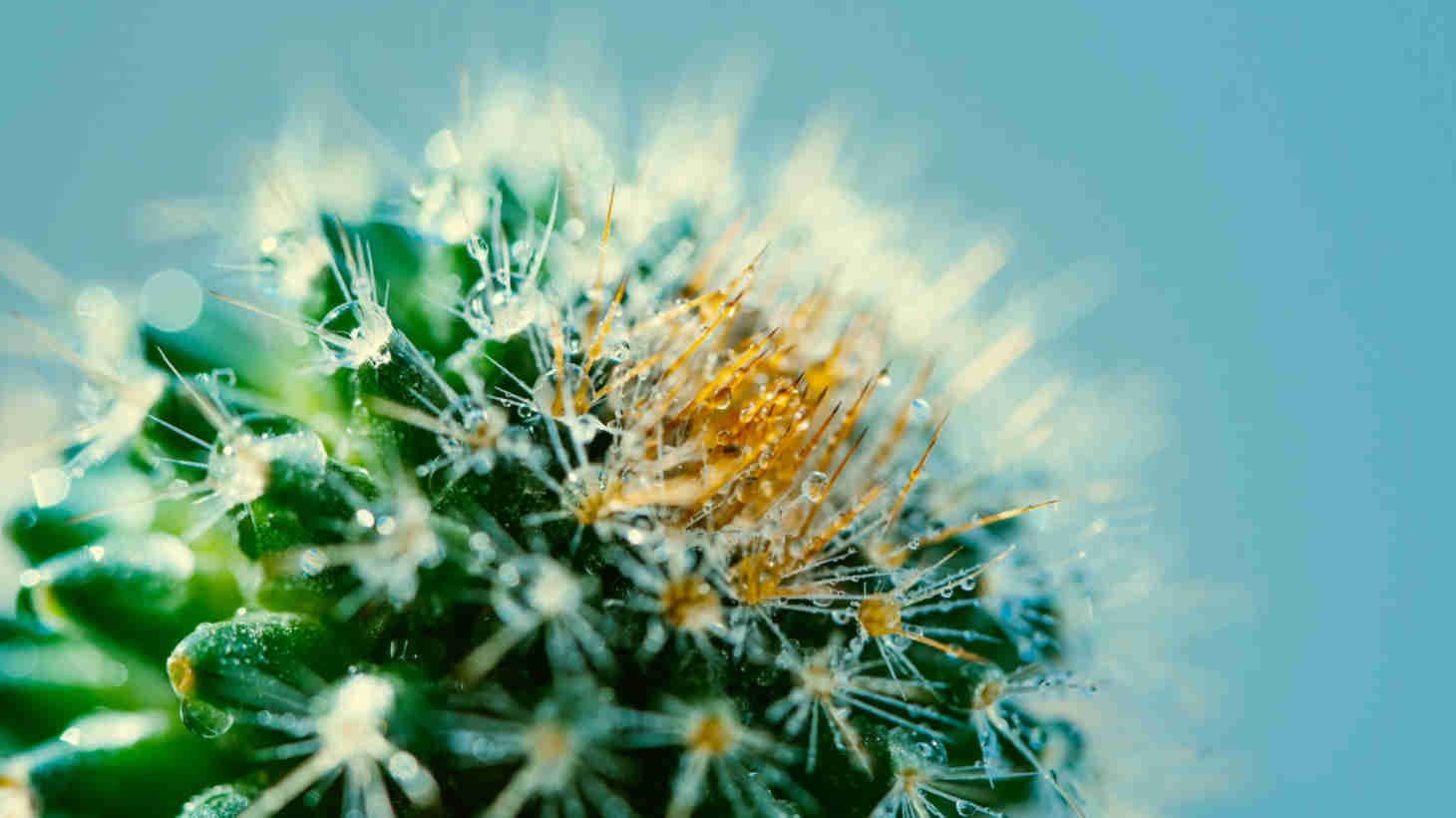
Factors Affecting Watering Needs of a Cacti
To fully understand how much water cacti need, it’s important to be aware of the key factors that influence how frequently they should be watered.
Cactus species
Different cactus species have varying water requirements. Some cacti, like desert-dwelling cacti, are more tolerant of dry conditions and need less frequent watering, while jungle cacti may need more regular watering.
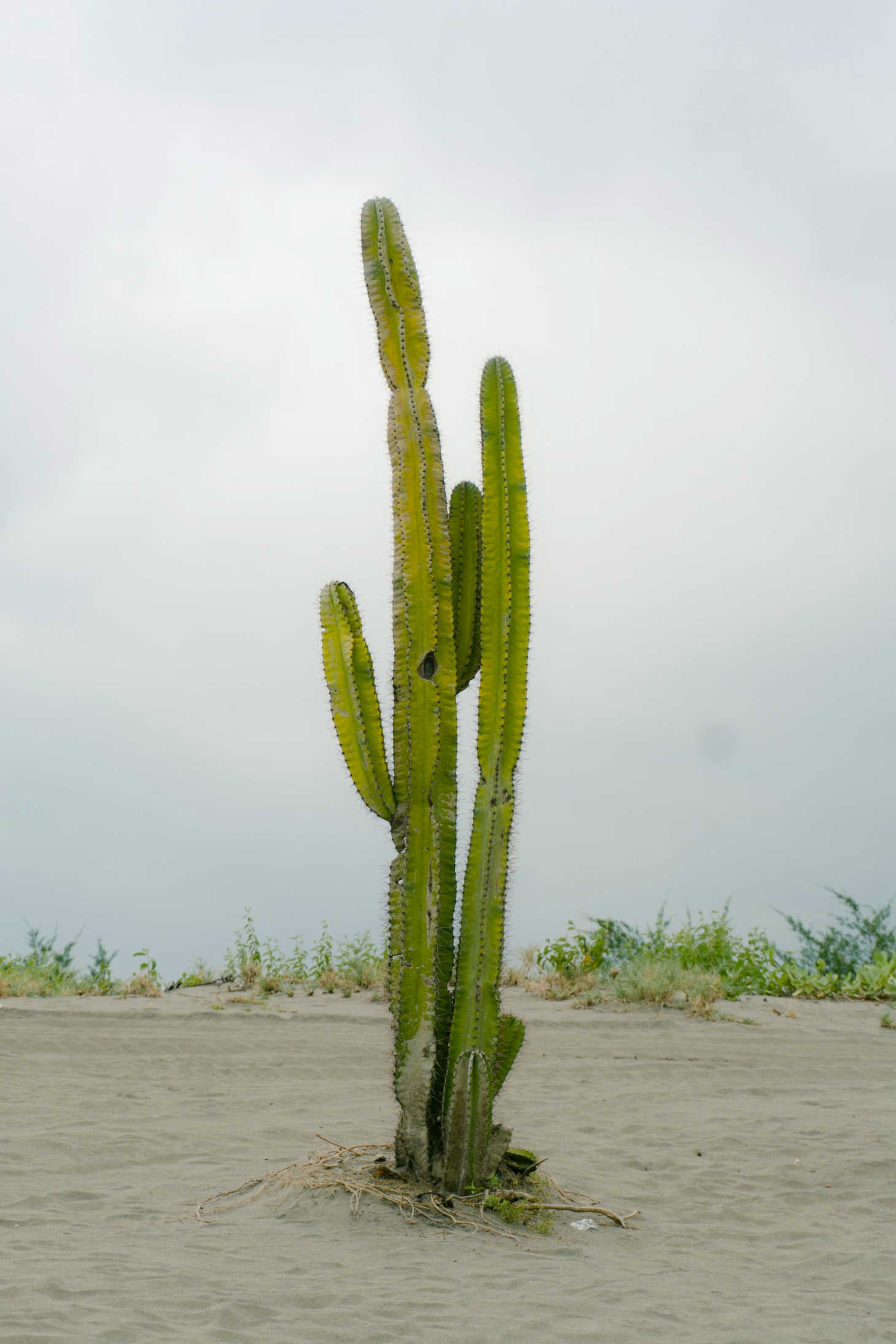
Climate
Cacti in hot and arid climates will generally require less water compared to those in more humid environments. Cacti exposed to direct sunlight for extended periods may lose water more quickly and may require more frequent watering to compensate for the increased evaporation.
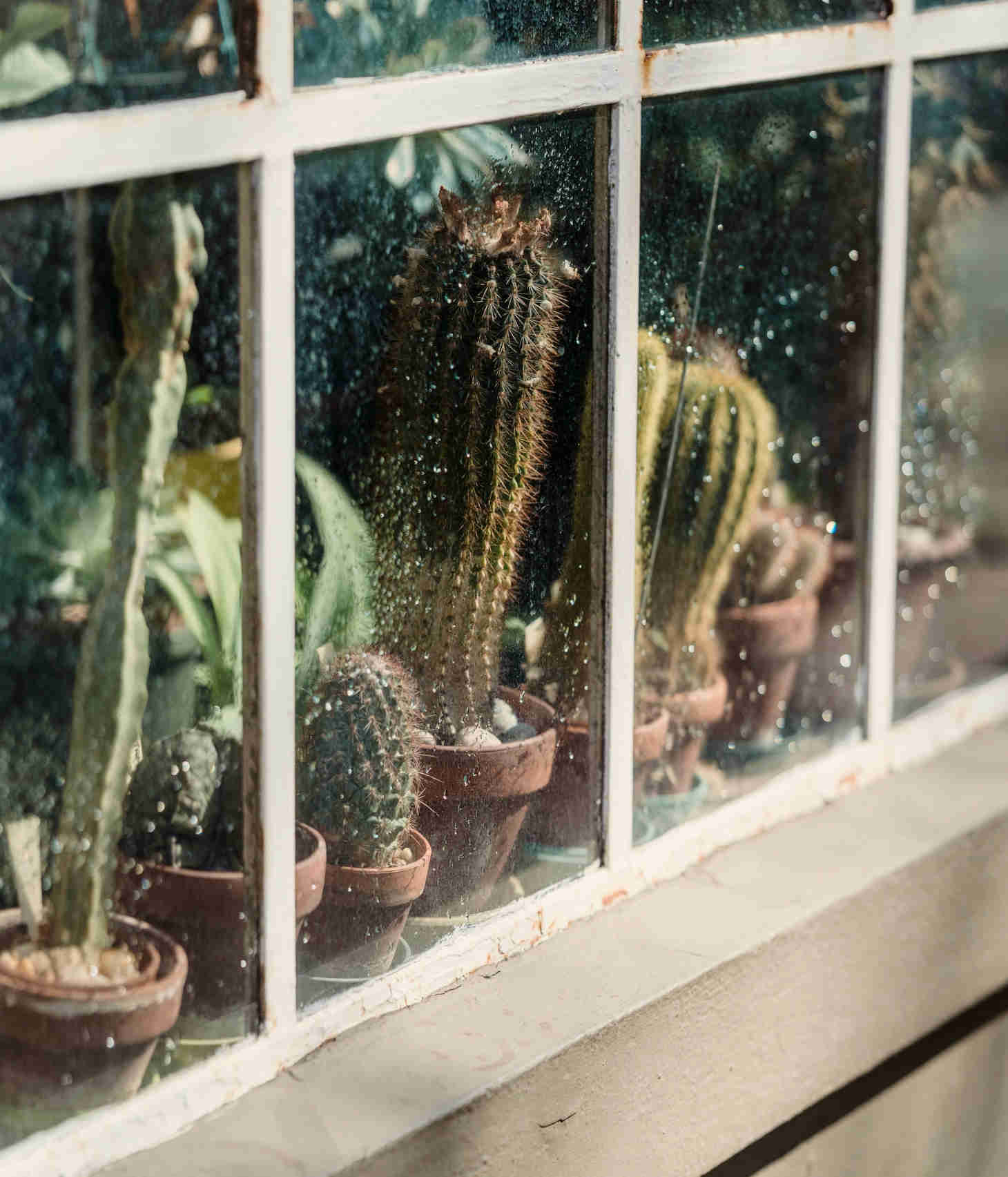
Season
A cactus’ hydration needs can vary depending on the time of year. During the warmer seasons when cacti experience most of their growth, they require more frequent watering to support their growth, prevent wilting, and encourage flowering and fruiting.
In late fall and winter, cacti enter a resting state and need reduced watering, allowing the soil to dry out between watering sessions for even longer stretches of time. However, in hot and dry environments, cacti may still need more regular watering even in the winter months.
Soil Type
The type of soil where a cactus is planted affects how well it holds water. It’s important to use well-draining soil that allows excess moisture to escape from the roots, preventing issues like overwatering and root rot. The roots and lower stems of a cactus can be at risk of rot when planted in heavy clay soils or soils with lots of organic matter, which have a tendency to retain water for longer periods of time.
Unfortunately most popular potting soils contain a large amount of peat moss which is known for retaining loads of water. For healthy cactus plants, avoid regular potting mixes heavy in peat.
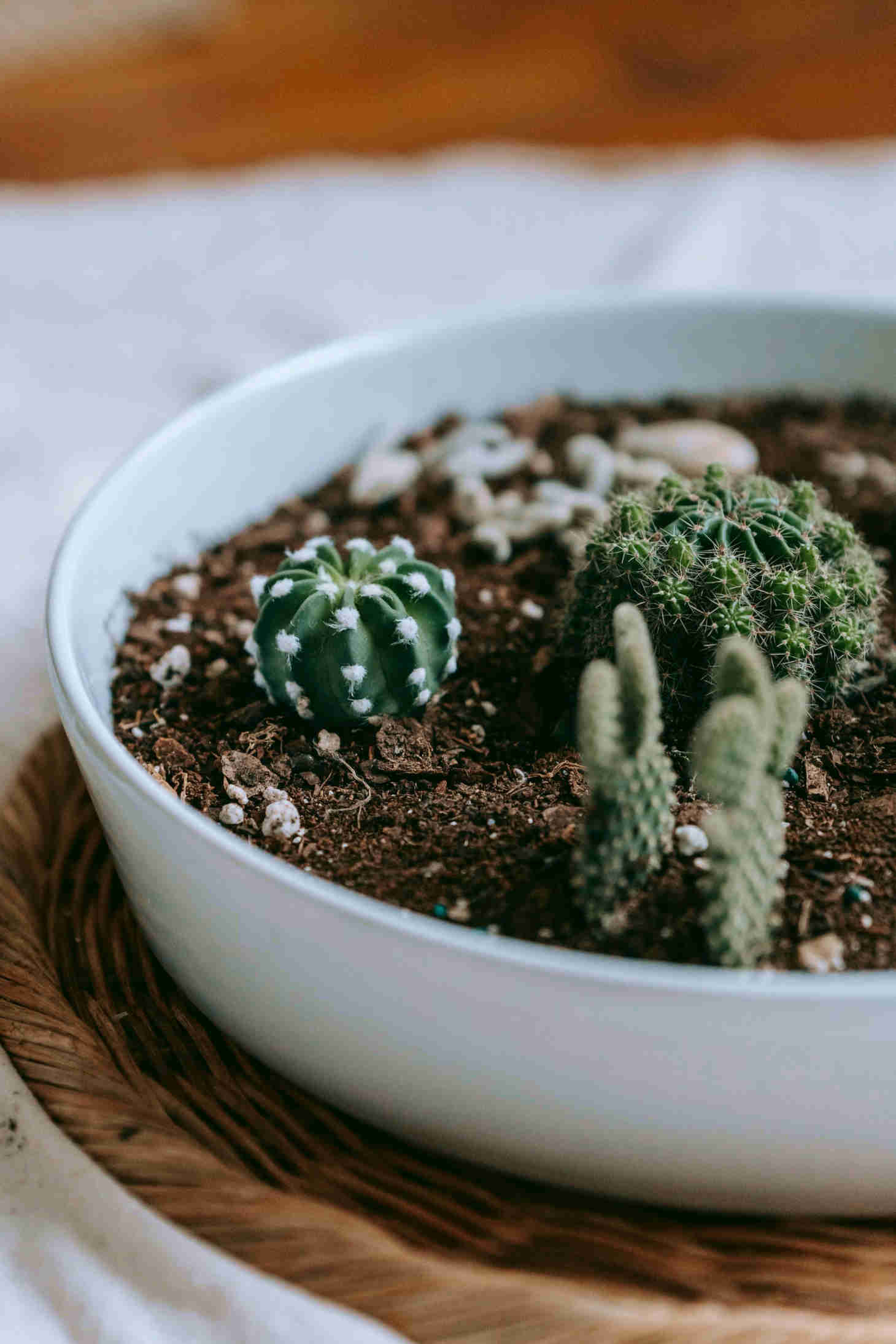
Stages of Growth
Younger or smaller cacti generally have lesser capacity for storing water and may need more frequent watering compared to larger, more mature plants.
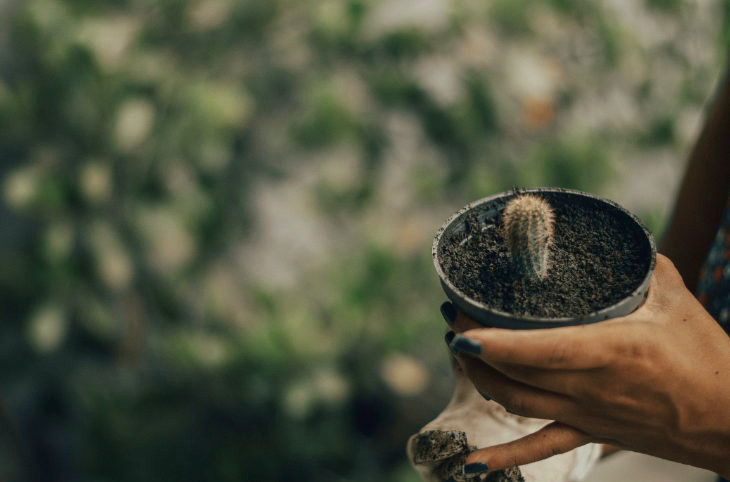
Watering history
Observing the drying pattern of the soil and the plant’s response to watering can guide you in establishing a suitable watering schedule. Signs of stress, such as shriveling, wilting, or visible changes in the plant’s appearance, indicate that the cactus requires watering to replenish its moisture levels.
Finding the Right Balance in Watering Cacti
Avoid misting desert cacti because they are not naturally adapted to areas with high surface moisture and humidity. Instead, these cacti tap into deep soil to extract moisture retained from the rainy season. On the other hand, jungle cacti like the Christmas cactus, have their own specific requirements and generally thrive when they receive occasional misting.

Watering Techniques
Using tepid rainwater is preferred instead of tap water because it helps avoid mineral buildup, which can hinder the absorption of nutrients and result in leaf deposits. For most cultivated cacti that are native to deserts, it’s best to avoid watering them from above. Instead, potted cacti can benefit from being placed in a saucer of water, allowing them to absorb moisture through the roots. Remember to remove the plant from the saucer once the soil is saturated halfway up to prevent overwatering.
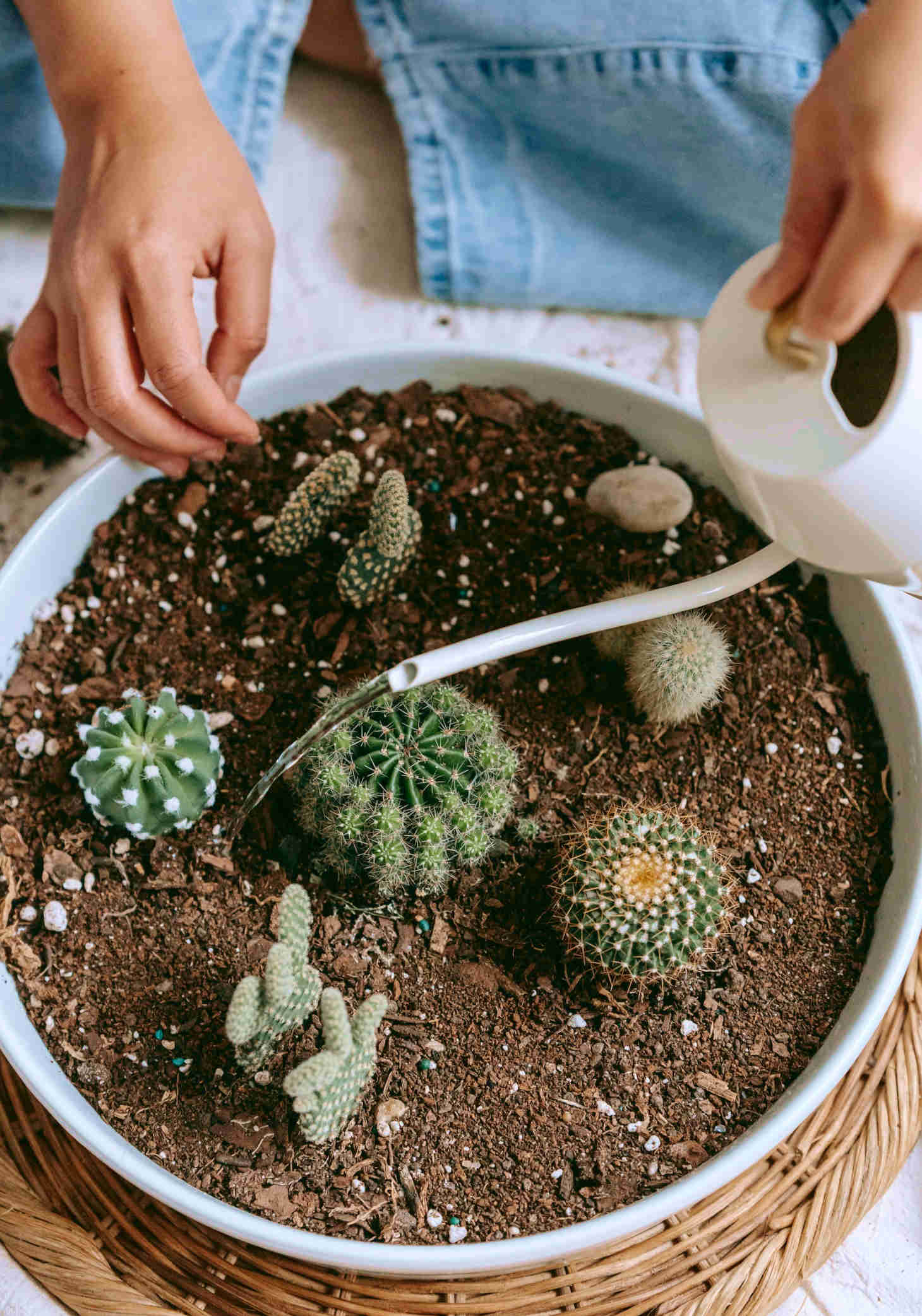
Another watering technique is to apply water directly to the soil’s surface. The amount of water can vary depending on factors like temperature, sunlight, and the specific planting conditions. Generally, a slow, deep watering once per week or less is sufficient for most cacti. This can be achieved by thoroughly soaking a container until excess water drains out of the bottom or by using a garden hose set to a low flow, allowing water to steadily drip into the cacti’s root zone for several hours.
Either way, it’s best to let a desert cacti’s soil completely dry out before watering again.
Watering During Different Seasons
In spring and summer, cacti should be watered at least once a week, ensuring thorough soil saturation and proper drainage. During autumn and winter, cacti enter a rest period where little water and no fertilization is necessary. Watering frequency should be reduced to allow the potting mix to completely dry out between waterings even for several weeks, although winter-flowering cacti may still require regular watering.
Decoding the Watering Needs of Cacti
Understanding the balance in watering cacti is crucial for their optimal care and long-term health. While cacti have adapted to survive in dry conditions, they still require regular watering to thrive. Factors such as the species and its native habitat, its environmental conditions, and growth stage influence their water needs. By observing signs of thirst and finding the right balance in watering techniques, we can ensure the well-being of our cacti.

